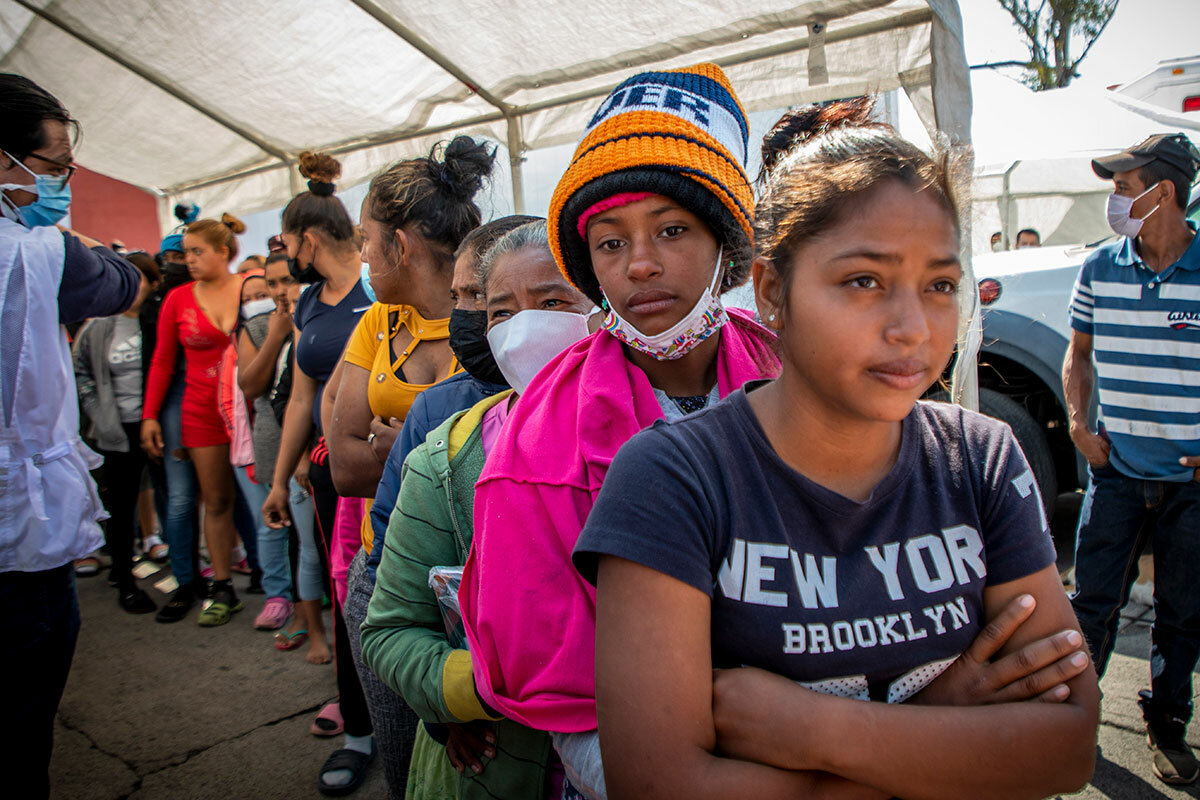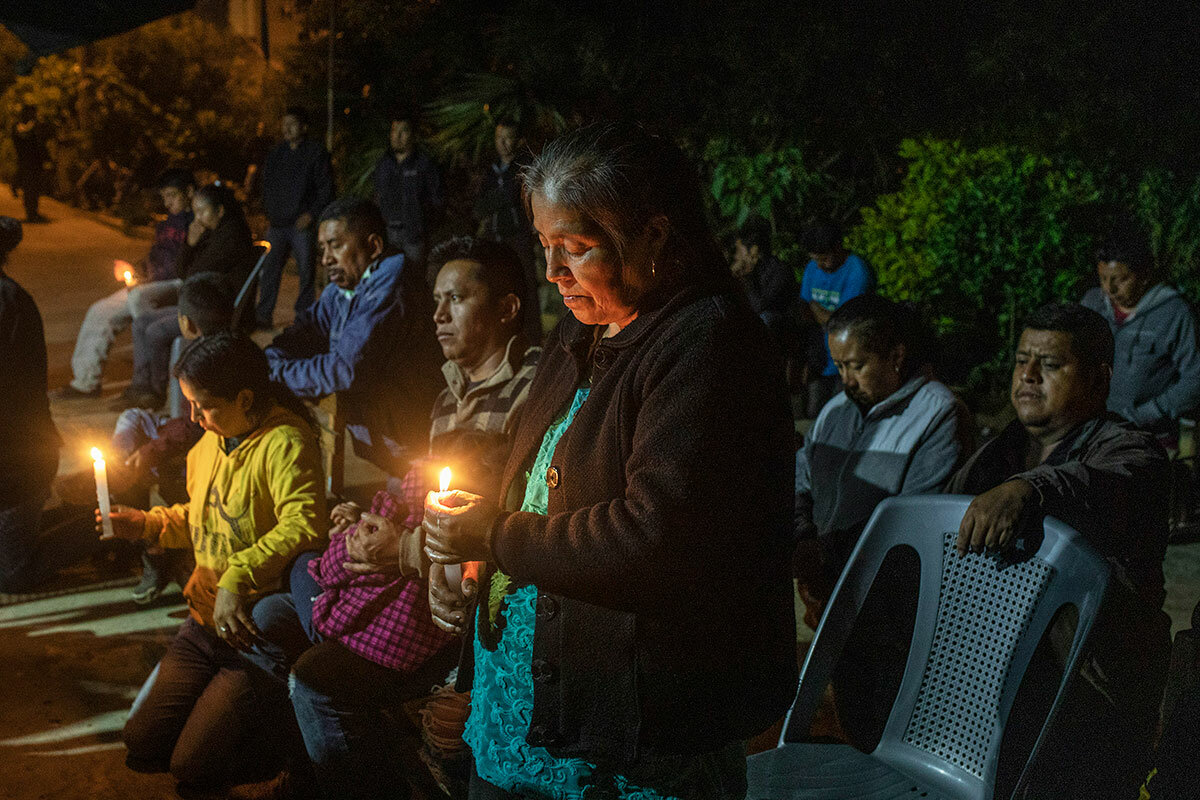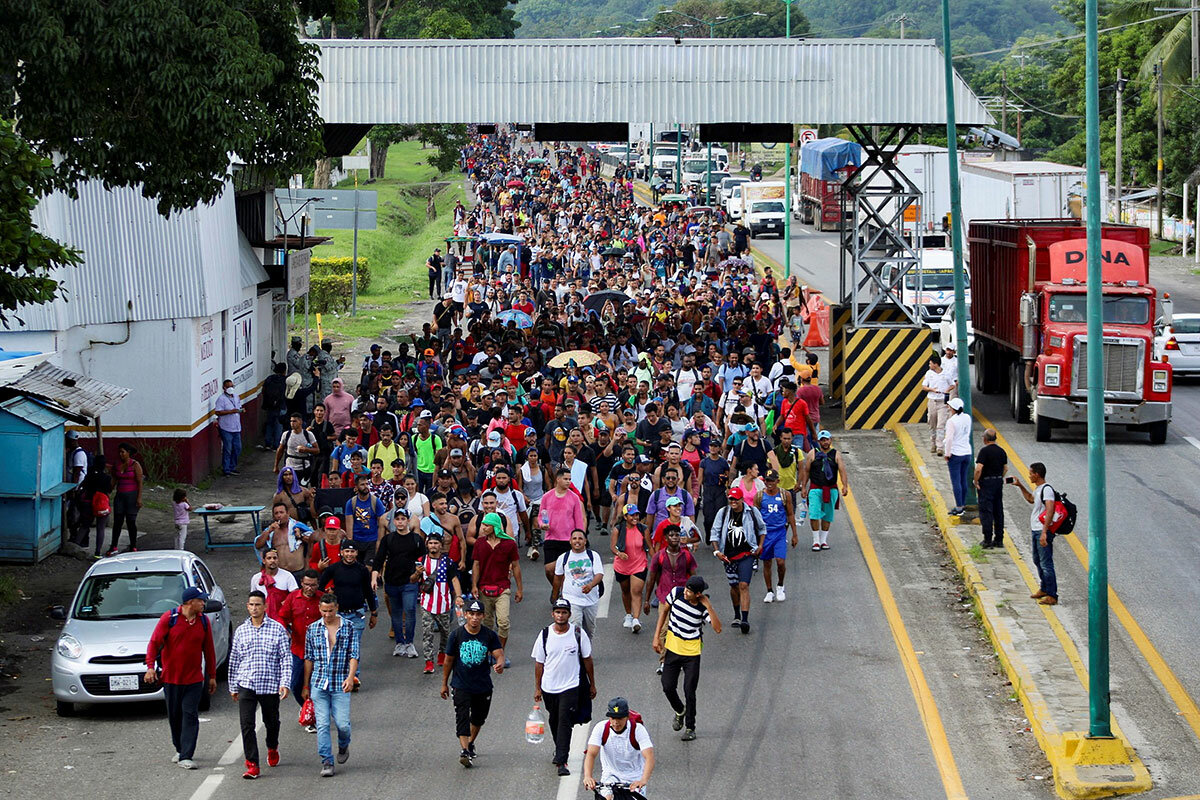Migration to US is risky. Why do parents let their teens try it solo?
Loading...
| Mexico City; and San Pedro Sula, Honduras
A 13-year-old Guatemalan was on his way to reunite with his father in the United States. A pair of 16-year-old cousins from Mexico were looking forward to steady work. Two young Hondurans promised their mother the journey would set them up to build her a home one day.
Instead, these youths – along with dozens of adults – perished in an abandoned, sweltering tractor-trailer in San Antonio last week, dubbed the deadliest human-smuggling incident in modern U.S. history.
The tragedy underscores the growing risks migrants face in trying to reach the U.S., but for many, it also raises a perennial question about unaccompanied minors: Why would a parent let their child go alone on such a life-threatening journey?
“For people in the U.S. – or wherever they are in the world – the question isn’t ‘How could you do that?’ but needs to be ‘What has to happen to you that you’re willing to give up everything?’” says Elizabeth Kennedy, a Honduras-based social scientist who wrote a groundbreaking 2014 report about minors who migrate alone.
Nearly 123,000 unaccompanied minors apprehended on the U.S.-Mexico border were referred to the Office of Refugee Resettlement in fiscal year 2021. That’s a record number and more than double the arrivals during the so-called unaccompanied-migrant crisis in 2014.
Not unlike adults and families seeking refuge in the U.S., children and teens embark on the often deadly path north to escape poverty, violence, lack of opportunity, climate change, and abuse – or to reunite with loved ones. Where U.S. onlookers may see a lack of parental responsibility, for many parents, confronting the life-threatening risks of migration in order to find safety or opportunity elsewhere is a defining moment of duty and compassion.
“If our kids leave, it’s not because we don’t love them,” says Concepción Rosario Mercado de Alvarenga, who over the past seven years watched her three children trickle out of El Salvador to migrate to the U.S. She says her decision to let them go came from a place of hope for a better life.
Eight years after her initial study was published, Ms. Kennedy says “nothing has been fixed” for families in Honduras, Guatemala, and El Salvador. In some cases, the situation around hunger, violence, and government corruption has gotten tangibly worse.
“Once you talk to a Salvadoran or Honduran parent,” she says, “you come to the conclusion: Why would you not” let your child migrate to the U.S.?
A family’s hope
The Biden administration has pledged to address the root causes of migration, in June announcing $3.2 billion in private-sector investment in Central America to spur employment. And at the Summit of the Americas last month, the U.S. and Canada committed to taking more guest laborers from the region, creating legal pathways north. But pledges like these don’t resonate with would-be migrants, who often don’t have the time to wait for big promises to become realities.
In the case of Karen Italia Caballero, the mother of two young men from Honduras who suffocated in the tractor-trailer June 27, the family discussed their departure together. In fact, Ms. Caballero traveled to Guatemala with them in early June before they carried on with a human smuggler.
Her kids couldn’t find work, and the family was struggling to make ends meet. “We all planned it together, so that they could have a different life, so they could achieve their goals and dreams,” she told Telemundo in an interview at her home in western Honduras.
“I hope you triumph,” she recalled telling her boys before they parted ways.
So far, four people face charges in connection to the deaths of 53 migrants in the tractor-trailer.
As border policies tighten, reliance on unscrupulous human smugglers grows. But these journeys north don’t always end in tragedy – for many, that’s the kernel of hope that motivates many migrants to take on the outsize risks – and they don’t always begin with a parent’s input.
For Jessica, a mother of four outside San Pedro Sula, Honduras, who asked to use only her first name for her family’s safety, she wasn’t given a say in her 17-year-old son’s departure for the U.S. last year. One winter evening, he mentioned he planned to leave with a group of friends. She told him no, “don’t go,” she recalls.
But her son had been talking about the need to go north ever since back-to-back hurricanes destroyed their home in November 2020, burying all their belongings under more than two feet of mud. It was the only path he could envision out of poverty for his family, and away from ever-present gang violence that chases so many young men like himself.
The day after Jessica told him it was a bad idea, she realized he was never asking permission: He’d already left.
“It’s not always up to the parent. Often these are decisions made by the child, who is frequently a teenager,” Mark Greenberg, former acting assistant secretary for the Administration for Children and Families, with responsibilities for unaccompanied child migrants under the Obama administration, told the Monitor last year. In the past decade, the number of unaccompanied minors arriving at the U.S. border has ballooned from 7,000 in 2011 to 122,731 in 2021.
Despite feeling panicked in the minutes or hours between texting her son at the start of his journey, Jessica says she came to realize there’s a trade-off to her worries.
“Living in Honduras is the most fear you can have,” she says. “It’s not that I sleep that well. But I sleep a little better, because at least I know someone won’t knock on my door and say, ‘The gangs killed your son.’”
Dwindling choices
The pandemic has made life even more challenging for youths in the region. Many lost parents or caregivers to COVID-19, becoming de facto breadwinners for their families in countries already facing high unemployment and low wages. Children in Latin America have on average been out of school longer than kids in any part of the world according to UNICEF, and the longer kids are away from the classroom, the less likely they are to return. The loss of hope in a future at home drives many to seek opportunity elsewhere.
Early in the pandemic, a group of kids ranging in age from 11 to 17 sat at folding tables in the sparsely decorated cafeteria inside the Casa Mambré refugee shelter in Mexico City. The Guatemalan, Honduran, and Salvadoran children were stopped by Mexican officials en route to the U.S., and now had to decide whether to apply for asylum in Mexico or return home – possibly to start the journey north again from scratch.
Few in the group of mostly young boys had discussed the voyage with an adult before taking off. Oscar, a 17-year-old from Guatemala, left his 5-year-old brother and parents behind almost two months prior. He says his family opposed the idea, asking him repeatedly to consider other options in Guatemala – like looking for work in the capital. But he could see his dead-end future at home, and wanted to take financial responsibility for himself and his loved ones.
“There’s nothing for me” in Guatemala, Oscar says. “No school, no work, no life.”
“So many of these kids are born into violence,” says Eréndira Barco, a social worker at Casa Mambré. “The moment they decide to take this journey, they are prepared for it in a really unfortunate way.”
She sees an element of resilience in the unaccompanied minors that pass through the shelter, and a maturity that comes at the cost of “not living a childhood” in their home country. “They don’t play, they can’t go into the streets because of gangs and violence,” she says. “Often, they can’t even go to school.”
Unimaginable decision
It’s hard for the average American to understand “the desperation these individuals have” in migrating or watching their child decide to migrate alone, says Essey Workie, director of the human services initiative at the Migration Policy Institute.
“We certainly have poverty and challenges in the U.S., but they pale in comparison to the level of deep poverty and safety issues” in Central America and parts of Mexico, she says. “When someone witnesses a family member or community member raped or killed in front of their eyes and then is threatened directly that they’re next? There’s no choice left but to flee.”
Bertha, a Honduran mother who asked to use only her first name, knows that feeling. When her family started getting threatening phone calls nearly a decade after her environmental activist husband’s unsolved killing, she took the danger seriously.
She felt “great pain” telling her 16-year-old son to go ahead and try his hand at reaching the U.S.
“I thought no and yes at the same time,” she says. “I was confused about everything.” She didn’t eat or sleep while waiting for news of his safe arrival. Eventually, he was deported home from Mexico.
“If parents were irresponsible, they wouldn’t search for options so that their kids could survive and get ahead in life,” Bertha’s son says about his mother’s decision to let him leave. “I consider it an act of wanting to protect my life. I faced a risk here and on the journey, but she knew that I had better opportunities” beyond Honduras.
Bertha says if a parent has the means to keep their child safe at home with them, that’s obviously the best choice. But it’s not always possible.
“For your kids, you’ll endure anything,” she says. “For the good of your kids, you are willing to make any sacrifice.”








